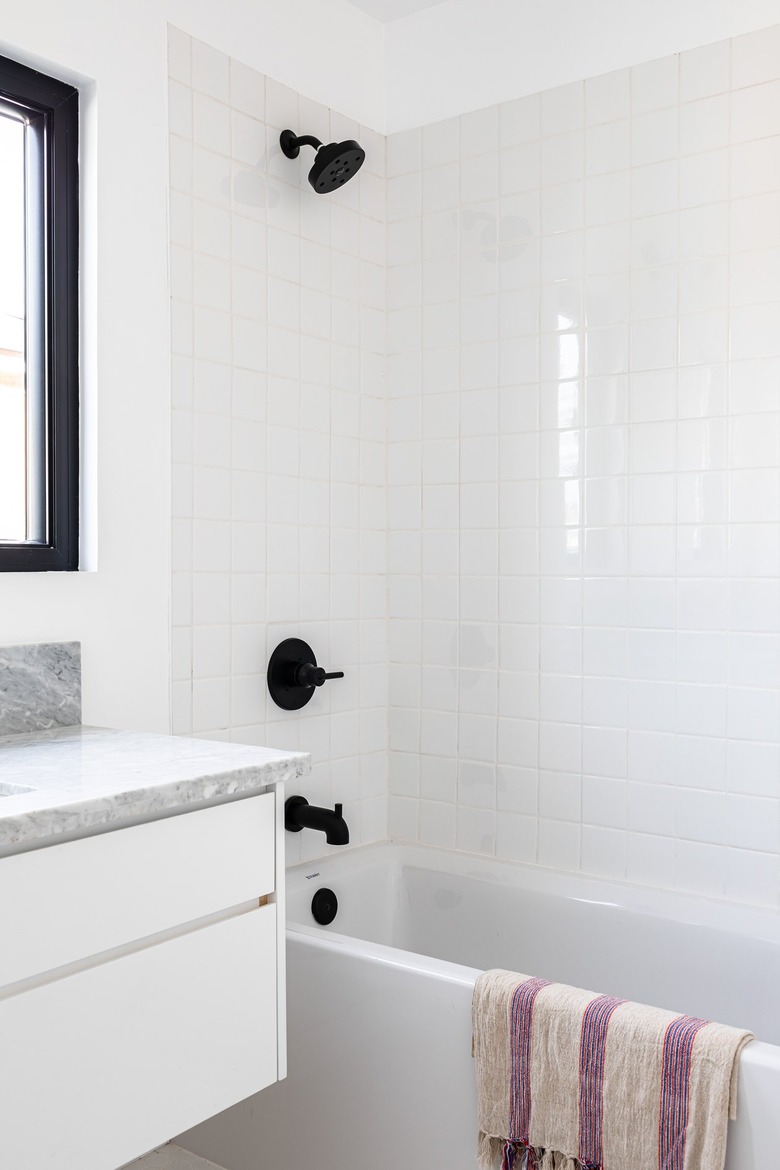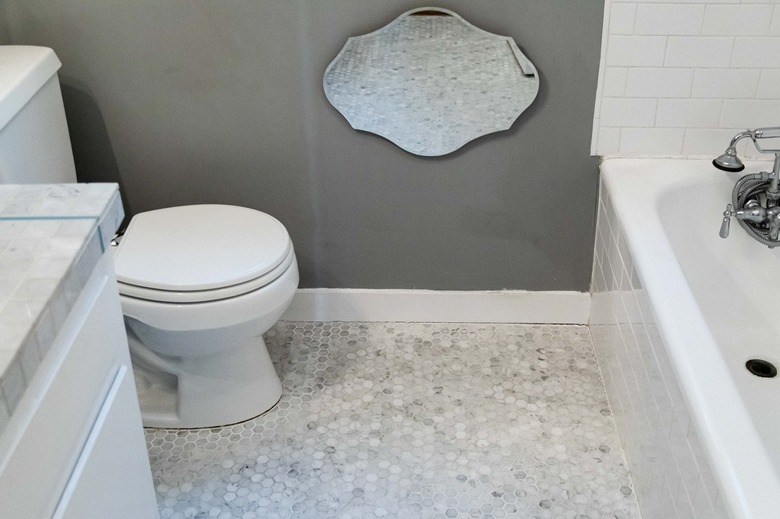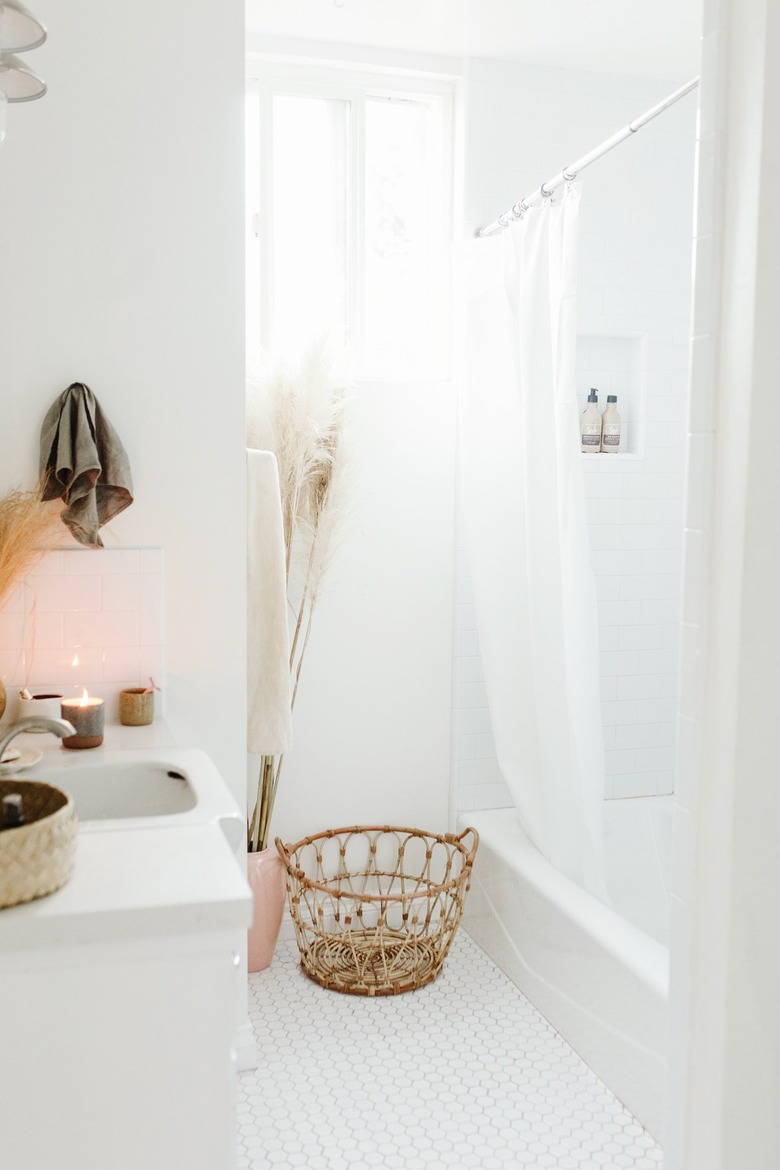Fiberglass Bathtubs: A Homeowner's Bathroom Guide
If you're remodeling your bathroom on a budget, a fiberglass bathtub can save you quite a bit of money without forcing you to sacrifice on style or color options. Whether you want the sophisticated look of a freestanding tub, the luxurious lounging of a soaking tub or just a standard drop-in tub that covers the basics, you can find what you want in fiberglass.
Fiberglass tubs aren't perfect, however. They may not last as long as other bathtubs and could scratch more easily. You'll need to take all of these factors into consideration when deciding whether the low price of fiberglass constitutes a good value.
Fiberglass Bathtubs Defined
Fiberglass Bathtubs Defined
To make fiberglass, tiny fragments or threads of glass are combined with another material, such as fabric or plastic. The result is a strong but lightweight material that can be molded into various shapes, such as car bumpers or bathtubs. When used to make a bathtub, fiberglass gets molded into the desired shape and then reinforced with a gel coat. This gel coat protects the fiberglass and creates a smooth finish.
Because it's moldable into any shape, fiberglass bathtubs come in a wide variety of shapes and sizes. You can get a traditional built-in bathtub, a freestanding soaking tub or a walk-in tub made from fiberglass. You can also opt for a matching fiberglass tub surround to cover the walls of a tub/shower alcove. Manufacturers can add dyes and tints to their gel coating, which means you can also get a fiberglass tub in a vast array of colors.
Pros of Fiberglass Bathtubs
Pros of Fiberglass Bathtubs
Although your bathtub's weight can vary by size, fiberglass bathtubs typically weigh bout 60 or 70 pounds, according to DreamMaker Bath & Kitchen. Because they're so light, you can install a fiberglass bathtub without reinforcing the bathroom floor. Lighter tubs are also easier to carry and maneuver on your way to the bathroom during the installation.
Fiberglass tubs are also the most inexpensive of the standard materials, making them a popular choice for remodelers on a strict budget. Prices can vary based on the size and features of the tub, but the average cost of a fiberglass tub is between $200 and $800.
Fiberglass doesn't last as long as some other tub materials, but you can have the tub refinished rather than replacing it. If your tub cracks or fades, there are many fiberglass tub refinishing companies that can repair and recoat the entire tub for you. Starting at around $300, fiberglass refinishing can add several years to the life of your tub. Resurfacing the tub is often less expensive than replacing it. It takes less time and refreshes your tub with much less mess than tearing it out and replacing it.
Cons of Fiberglass Bathtubs
Cons of Fiberglass Bathtubs
The gel coat put on fiberglass bathtubs makes them much less resistant to chips and scratches than other bathtub materials. You'll need to make sure you never use abrasive cleaners or sponges on a fiberglass bathtub when cleaning it. You'll also need to be careful when using the tub because even a dropped shampoo bottle or can of shaving cream can cause a ding in the gel coat. You can get a gel coat repair kit at any hardware store to fix the damage, but matching the color of the tub can prove challenging, especially if you went with a color other than the standard white or tan.
Fiberglass bathtubs are also more porous than other tubs. Cracks and scratches in the gel coat trap and hold moisture, causing discoloration as well as bacteria and mold growth. Cracks are extremely difficult to clean and are likely to discolor over time. In fact, the color of your fiberglass tub is likely to fade over time, especially if it is exposed to large amounts of sunlight in a bright bathroom.
You should also be aware that low-end fiberglass tubs can warp and bend. You may feel the tub flex beneath you as you shift your weight. A fiberglass bathtub will probably last you around 10 to 15 years, according to Toledo New Bath & Kitchen. That's a decent life for the price, but don't expect your fiberglass bathtub to last forever like your grandmother's old cast iron tub did.
How Fiberglass Compares
How Fiberglass Compares
Fiberglass bathtubs are very similar to acrylic tubs. Acrylic tubs are made from sheets of plastic that get heated and stretched over a mold before being reinforced on the underside with layers of fiberglass. Like fiberglass tubs, acrylic tubs are lightweight and affordable, although acrylic tubs usually cost around $100 more than their fiberglass counterparts. Acrylic is a bit sturdier than fiberglass and is not as porous or prone to cracking. Acrylic has the same life span as fiberglass, but it's easier to clean since it's harder to scratch and chip.
Budget-conscious remodelers often consider steel tubs as well as fiberglass. Steel tubs are stamped into shape and then coated with a thin enamel finish. They're inexpensive at $200 to $600, but their enamel coating is as prone to chipping as the gel coat on fiberglass tubs. Inexpensive models also tend to flex like fiberglass. Steel tubs don't come in nearly as many colors, shapes or sizes as fiberglass, however, and may limit your choices.
If you're planning to stay in your home for a long time, you may have concerns about the durability of a fiberglass bathtub. In that case, you may want to consider cast iron, which can last for 50 years. Cast iron is more expensive than fiberglass, however, and even a small tub can easily cost $400 to $800. Cast iron is very heavy, so you may also incur the added cost of reinforcing your bathroom floor.
Fiberglass Tub Care and Maintenance
Fiberglass Tub Care and Maintenance
To clean your fiberglass bathtub, apply a nonabrasive cleanser with a soft sponge or nylon brush. Never use anything abrasive or take a stiff scrub brush or steel wool to the bathtub. You can use a gentle multipurpose household cleaner or dish soap to clean the tub or mix a cleaning solution of equal parts dish soap and white vinegar.
For particularly tough stains, apply a paste of baking soda and vinegar and allow it to sit on the stain for a few minutes. You can also use acetone nail polish remover for oil-based or adhesive stains. Use nail polish remover sparingly, however, and wipe it off with a clean cloth rather than allowing it to go down the drain.
To keep your tub looking shiny and to make it easier to clean, you can also periodically apply automotive cream wax to the surface. This will help buff out minor scratches and keep the surface of your fiberglass tub more resistant to stains. You may only need to apply wax twice a year if your tub is new, but older tubs may benefit from more frequent application.
References
- DreamMaker Bath & Kitchen: All About Bathtub Installations: Which Tub Will Work for You?
- Fine Homebuilding: Bathtub Buyer's Guide
- InspectAPedia: Guide to Choices of Tubs and Tub/Shower Units
- Badeloft Luxury Bathrooms: What is a Fiberglass Tub: Beginner's Guide
- HomeAdvisor: How Much Does Bathtub Refinishing Cost?


